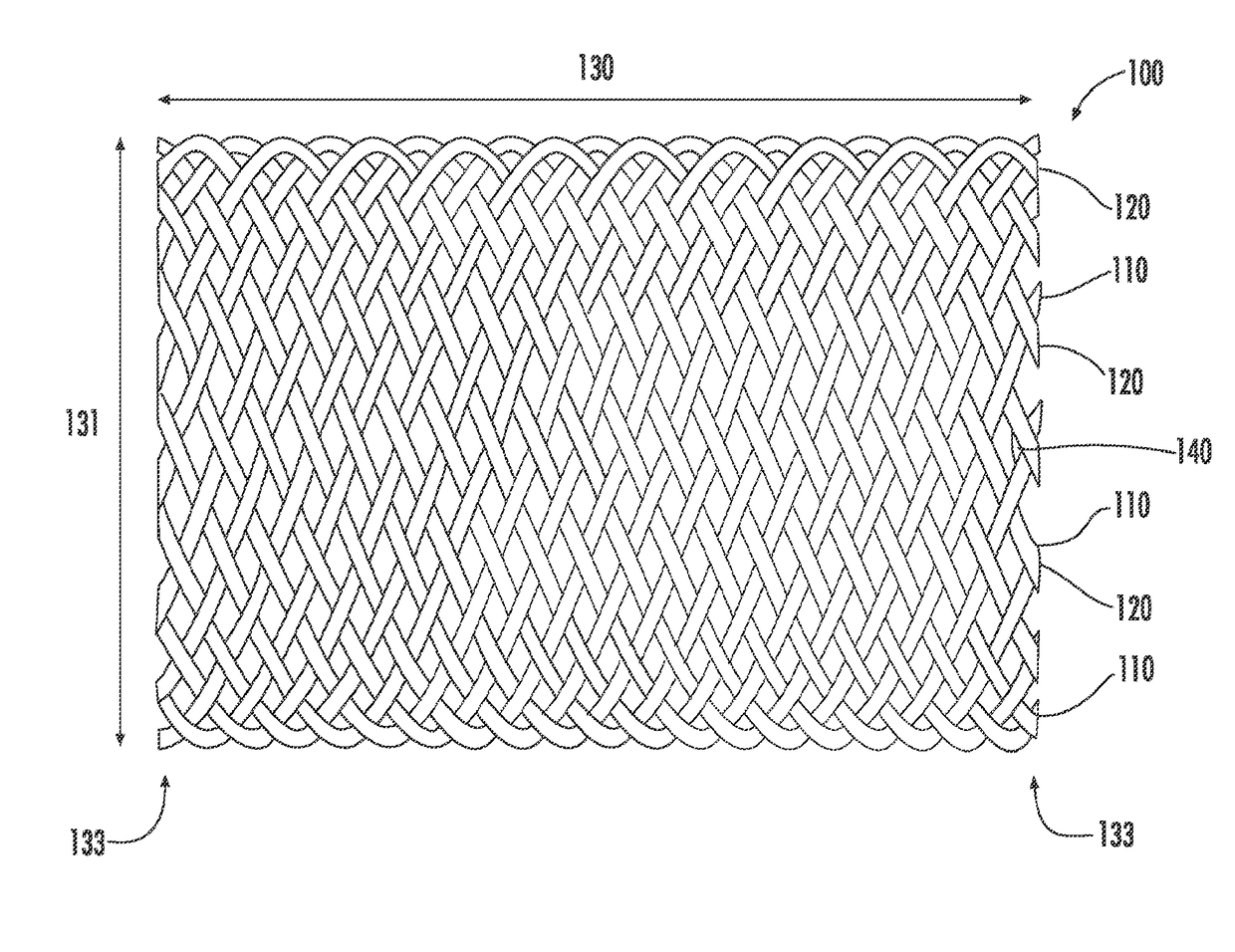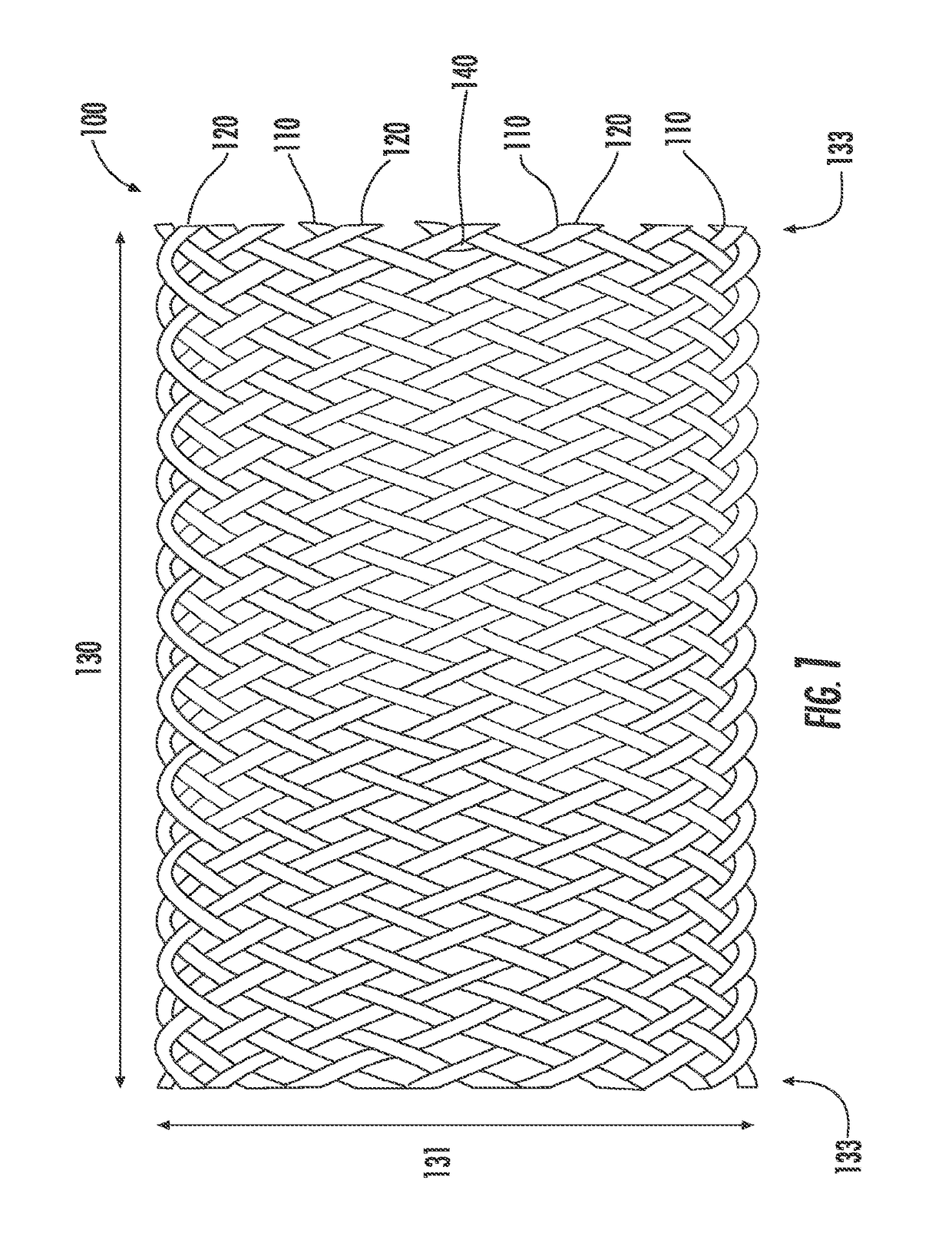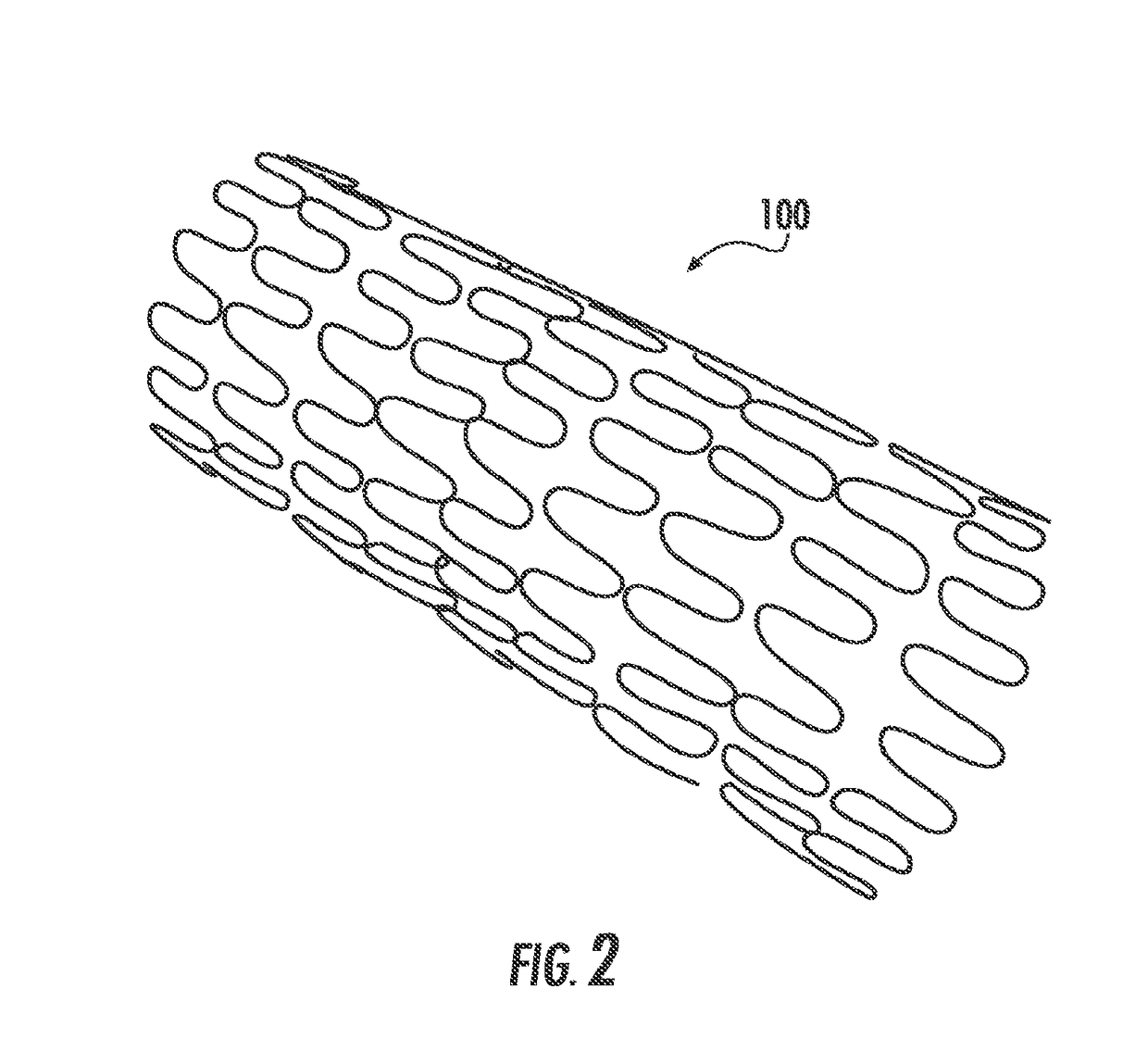Drug-eluting medical implants
a technology of medical implants and drug elution, applied in the field of stents, can solve the problems of thrombosis and vascular remodeling, affecting the use of such materials, and limiting the use of such materials, and achieve the effects of exceptional drug elution properties, exceptional expandability and mechanical properties
- Summary
- Abstract
- Description
- Claims
- Application Information
AI Technical Summary
Benefits of technology
Problems solved by technology
Method used
Image
Examples
example 1
[0093]Several inventive metal drug eluting stents (MDES) were manufactured by applying a Drug Coat layer and a Top Coat layer on various commercially available bare metal stents (BMS) listed in Table 1 using a spray-coating method. Details of the spray-coating procedure are described below.
TABLE 1Stent strut design and surface area of different BMSStrutStrutStentStentwidththicknessmasssurface areaBMS(μm)(μm)(mg / 10 mm)(mm2 / 10 mm)Absolute Pro ™11023033135EverFlex ™10816143206LifeStent ®10020543200S.M.A.R.T. ®10017344215VascularS.M.A.R.T. ®75 / 10017031172FlexSupera ®174NA56199
Coating Solution Preparation
[0094]Poly(L-lactide-co-ε-caprolactone) (PLCL, 1.45 g), poly(L-lactide) (PLA, 4.34 g), and paclitaxel (PTx, 0.21 g) were weighed using an analytical balance and transferred to a 250 mL wide mouth glass jar. Then, 140 mL dichloromethane (DCM) was added to completely dissolve the solid under gentle shaking. Thereafter, 60 mL anisole (AN) was combined to afford a homogenous DC solution of 3...
example 2
Absolute Pro® Platform n
[0101]The viability of the drug coatings on metal stents was tested on the platform of the Absolute Pro® stent (ID=7 mm) (Abbott Laboratories, Abbott Park, Ill.). PLCL was used as the Drug Carrier and PLCL / PLA (75:25 wt:wt) as the Top Coat (Table 1). The coating mass was 2 mg / 10 mm for DC and 0.8 mg / 10 mm for TC (Exp078), respectively. An MDES with thicker TC (Exp078B) was also fabricated to evaluate the impact of TC thickness on PTx drug release. To achieve a total PTx loading of 35 μg / 10 mm, the PTx loading rate in the DC layer was maintained at 1.75 wt %.
TABLE 2PTx coated Abbott Absolute Pro ® stents.PTx in DCDCDC massTCTC massPTx loadingGroup(wt %)polymer(mg / 10 mm)polymer(mg / 10 mm)(μg / 10 mm)Exp0761.75PLCL2.0NANA35Exp0781.75PLCL2.0PLCL / PLA0.835(75:25)Exp078B1.75PLCL2.0PLCL / PLA2.035(75:25)Note:mg / 10 mm refer to mg of material per 10 mm of stent length
[0102]The in vitro kinetic drug release (KDR) profiles of these PTx coated stents were assessed using pH 7.4...
example 3
EverFlex® Platform
[0105]The EverFlex® peripheral vascular stent was used as a platform to develop a drug coating that can deliver PTx up to 6 months. PLCL and D,L-PLGA (85:15) (Polymer reference #RG858 S) were respectively used as the drug carrying polymers, while PLCL / PLA (75:25 wt:wt) was used as the TC layer. Details of the coating composition and coating mass of DC and TC layers on these stents are summarized in Table 3.
TABLE 3Coating formulations on EverFlex ® stentsPTx in DCDCDC massTCTC massPTx loadingGroup(wt %)polymer(mg / 10 mm)polymer(mg / 10 mm)(μg / 10 mm)Exp0.875PLCL4.0PLCL / PLA2.035085C(75:25)Exp0.875PLCL4.0PLCL / PLA4.035085D(75:25)Exp0.875RG858 S4.0NANA35085BExp0.875RG858 S4.0PLCL / PLA2.035085E(75:25)Note:mg / 10 mm refer to mg of material per 10 mm of stent length
Stents Exp 085B to Exp 085E were subject to KDR evaluation without simulated deployment. FIG. 6 shows their KDR profiles over a period of 94 days. Both Exp 085C and Exp 085D carry the same DC layer of PLCL and PTx, bu...
PUM
| Property | Measurement | Unit |
|---|---|---|
| thickness | aaaaa | aaaaa |
| thickness | aaaaa | aaaaa |
| pH | aaaaa | aaaaa |
Abstract
Description
Claims
Application Information
 Login to View More
Login to View More - R&D
- Intellectual Property
- Life Sciences
- Materials
- Tech Scout
- Unparalleled Data Quality
- Higher Quality Content
- 60% Fewer Hallucinations
Browse by: Latest US Patents, China's latest patents, Technical Efficacy Thesaurus, Application Domain, Technology Topic, Popular Technical Reports.
© 2025 PatSnap. All rights reserved.Legal|Privacy policy|Modern Slavery Act Transparency Statement|Sitemap|About US| Contact US: help@patsnap.com



